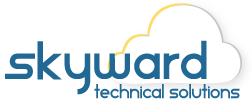Cloud Services: IaaS, PaaS, and SaaS
In your quest to optimize business operations, you may have encountered the vast world of cloud computing services. Among the most prominent offerings are Infrastructure as a Service (IaaS), Platform as a Service (PaaS), and Software as a Service (SaaS). These cloud service models are transforming the way businesses operate by providing scalable, cost-effective solutions. Here we will shed some light on the unique benefits and applications of IaaS, PaaS, and SaaS.
IaaS: Infrastructure as a Service
IaaS is the foundational layer of cloud services, offering virtualized computing resources over the internet. Here are some key features and benefits:
1. Scalable Infrastructure:
IaaS provides businesses with access to a scalable pool of resources, including virtual machines, storage, and networking. This scalability allows you to adjust resources as needed, accommodating changing workloads.
2. Cost-Efficiency:
With IaaS, you pay only for the resources you consume, eliminating the need for upfront hardware investments. This cost-efficiency is particularly advantageous for small businesses with limited budgets.
3. Flexibility and Control:
IaaS grants you greater control over the underlying infrastructure. You can configure and manage virtual machines, storage, and networking to suit your specific requirements, including operating system choices and software installations.
4. Disaster Recovery:
IaaS providers often offer robust disaster recovery solutions. You can replicate your infrastructure in multiple geographic regions, ensuring business continuity even in the face of unforeseen events.
5. Use Cases:
IaaS is well-suited for businesses that require complete control over their infrastructure, such as software development and testing, hosting websites and web applications, and running virtual desktops.
PaaS: Platform as a Service
PaaS builds on the foundation of IaaS by offering a platform for developing, deploying, and managing applications. Here’s what you need to know:
1. Application Development:
PaaS streamlines the application development process by providing tools and frameworks for building, testing, and deploying applications. Developers can focus on coding while the platform manages infrastructure details.
2. Scalability and Integration:
PaaS platforms are designed to be highly scalable and offer integration with various databases and services. This makes it easier to develop and deploy complex, scalable applications.
3. Cost Savings:
By abstracting infrastructure management, PaaS reduces the operational overhead, allowing businesses to save on resources and time.
4. Use Cases:
PaaS is ideal for businesses looking to develop and deploy web and mobile applications rapidly. It’s also a valuable tool for businesses seeking to automate and streamline their development and deployment processes.
SaaS: Software as a Service
SaaS represents the top layer of cloud services, offering fully functional software applications accessible over the internet. Here’s what makes SaaS unique:
1. Accessibility:
SaaS applications are accessible from any device with an internet connection, making them highly convenient for remote work and collaboration.
2. Automatic Updates:
SaaS providers handle software updates, ensuring that users always have access to the latest features and security patches without manual installations.
3. Cost-Effective Licensing:
SaaS typically follows a subscription-based model, allowing businesses to pay for software on a per-user or per-month basis. This model often reduces upfront costs associated with traditional software purchases.
4. Security and Compliance:
SaaS providers invest heavily in security and compliance measures, offering businesses a secure and compliant software environment.
5. Use Cases:
SaaS is suitable for a wide range of business applications, including customer relationship management (CRM), email and collaboration tools, project management, and more.
In the dynamic world of cloud computing, understanding the differences between IaaS, PaaS, and SaaS is essential for making informed decisions about which cloud services best suit your small business needs. IaaS offers scalable infrastructure and control, PaaS streamlines application development, and SaaS delivers accessible software solutions. By harnessing the power of these cloud service models, your business can enhance its efficiency, agility, and competitiveness in an ever-evolving digital landscape.











Leave a Reply